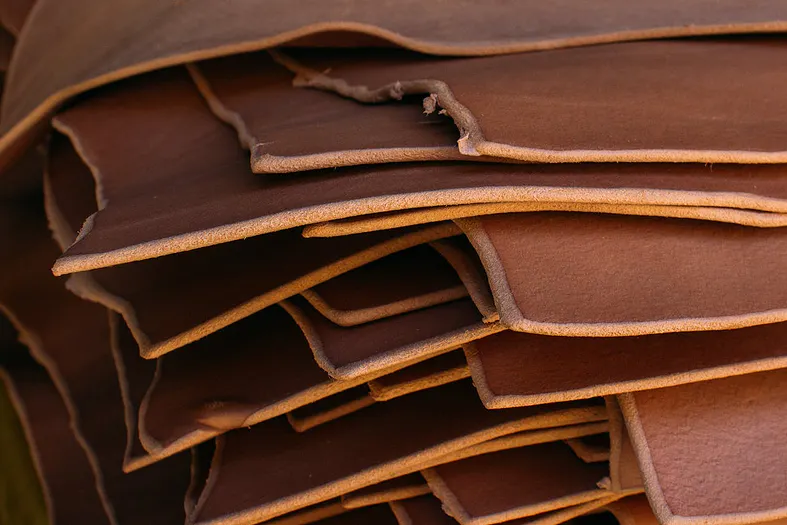The purpose of leather tanning is to transform raw hides into a less perishable and more durable material. Traditionally, tanning methods include vegetable tanning, chrome tanning, etc. Magnesium oxide can be used as an auxiliary material. For example, alkaline substances are used to help remove hair and fat during unhairing or liming, and can also adjust the pH value during the neutralization step. The application of magnesium oxide (MgO) in leather tanning involves multiple links, and its alkaline characteristics and chemical properties make it an important auxiliary material in the process.

1. Neutralization and pH adjustment
Neutralization after deliming: After liming (removing hair and fat) and deliming (removing lime), leather may have residual acidic substances. Magnesium oxide, as a weak alkaline substance, can gradually neutralize the residual acid, avoid drastic pH fluctuations, and protect the collagen fiber structure.
Preparation before chrome tanning: Chrome tanning needs to be carried out within a specific pH range (usually 2.8-3.2). Magnesium oxide can adjust the pH after pickling to ensure that tanning agents (such as chromium salts) effectively penetrate and bind to collagen.
2. Buffering agent
Stabilize the tanning environment: Magnesium oxide has a low solubility and can slowly release OH⁻ ions to maintain the pH stability of the tanning system, especially in chrome tanning or vegetable tanning, to reduce the precipitation of tanning agents or the roughness of leather grains caused by sudden changes in pH.
3. Auxiliary deliming and softening
Replacing traditional ammonium salts: Traditional deliming uses ammonium sulfate, but it will produce ammonia pollution. Magnesium oxide, as an environmentally friendly alternative, reduces ammonia emissions, softens leather fibers, and improves the uniformity of subsequent tanning.
4. Environmental protection and process optimization
Reduce pollution: Compared with strong alkalis (such as sodium hydroxide), magnesium oxide has mild alkalinity, which reduces the difficulty of wastewater treatment and reduces damage to leather fibers.
Improve quality: Improve the softness, fullness and dyeing uniformity of leather through fine pH control.
5. Other applications
Filling and finishing: Magnesium oxide powder may be used as a filler to improve the physical properties of leather (such as wear resistance and firmness).
Wastewater treatment: In tanning wastewater, magnesium oxide can neutralize acidic substances or precipitate heavy metal ions, assisting environmental protection treatment.
Magnesium oxide mainly plays the role of neutralizer, pH buffer and environmental protection additive in leather tanning. Its mild alkaline properties and low solubility give it significant advantages in improving leather quality, simplifying processes and reducing environmental pollution. Specific applications need to be combined with tanning methods (such as chrome tanning, vegetable tanning) and process parameter optimization.
